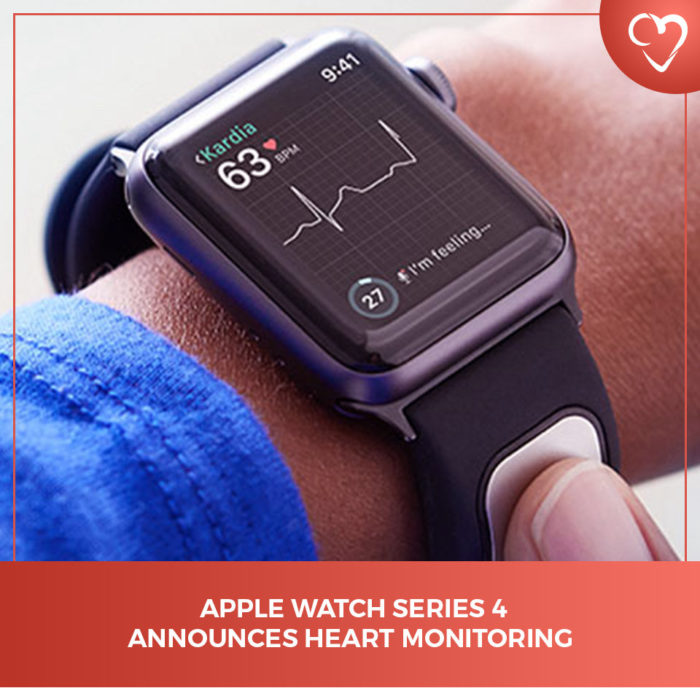
In September, Apple announced their new Apple Watch Series 4, which now is equipped with heart monitoring. Apple’s move into heart monitoring is part of a wider trend of consumer technology (not to mention wearable tech) entering into the healthcare sphere. Dr. Rodney P. Horton of the Texas Arrhythmia Institute explained the significance of the Apple Watch’s new abilities, saying, “Technology facilitating heart rate and heart rhythm has progressed dramatically with the Apple Watch Series 4. This wearable monitor offers personal monitoring with electrogram detail, allowing for continuous information to go to the patients as well as their medical professional. This disruptive technology will redefine how many rhythms are managed.”
But before buying or upgrading to a Series 4, it’s helpful to know what exactly an electrocardiogram (an ECG or EKG) is and what cardiac information it captures. A traditional ECG uses 12-leads or ‘positions’ to detect the electrical signals of the heart and allows a physician to check your heart’s rhythm but it sometimes can also indicate other heart problems such as a heart attack or abnormal thickening of the heart muscle. But to detect a problem with the heart’s rhythm, ECGs do not need the 12-leads. The Series 4’s heart features include the ability to do an electrocardiogram, thanks to an optical heart rate sensor (by way of electrodes in a “digital crown”) which can detect heart rhythm disturbances such as atrial fibrillation. One concern many cardiologists have about the Series 4’s new heart tool is that gives consumers tools to track their heart condition without educating them on heart conditions or their risk factors.
One common heart rhythm disturbance that the general public may not have awareness of is Atrial Fibrillation or Afib. Essentially, AFib occurs when the heart’s electrical signals misfire causing the heart’s upper chambers (the atria) to send electrical signals quickly and irregularly and does not allow the upper chamber to contract normally. Blood can then pool in the atria and form clots which can get dislodged from the heart putting a person at higher risk of having a stroke. A fast and chaotic rhythm with Afib can also make the heart weak and inefficient, making people with Afib tired or short of breath. Afib can be effectively treated but early detection is important.
The Watch Series 4 record’s your heart’s electrical impulses by connecting the circuit between both your arms and your heart. The resulting waveform is then auto-stored in your phone’s Health app, making the data easier to share with a doctor. The primary audience here is, of course, people with heart rhythm disturbances or at risk of them. The danger is that the extra information for those not at risk could make healthcare providers significantly busier with patients who wouldn’t otherwise have AFib concerns.
But the more the public is educated about Atrial Fibrillation, the more effective and less harmful Apple’s heart features stand to be. That’s why CardioVisual makes a great app addition to the Apple Watch Series 4 because our application puts a digital health video library in your phone (or in this case on your wrist). Our content visually explains not only normal heart function and electrical activity but what heart conditions (such as arrhythmia) are as well as what treatments are available for them. Studies have found that patients who learn health information via video